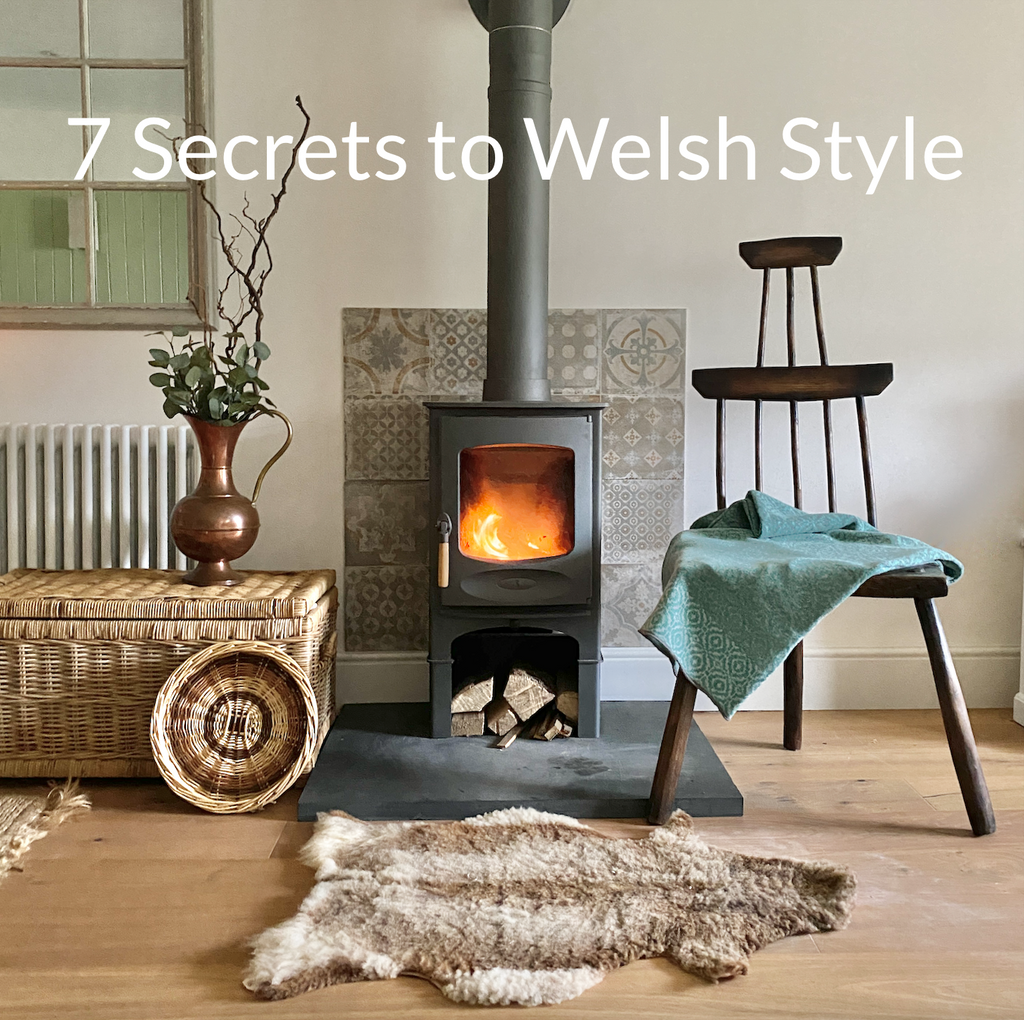
Rustic, practical, pared back - incorporating Welsh style into a home can make even a modern apartment feel like its tucked away in a tiny Welsh village. There is something about this décor that makes a house feel like home, and adds some history, personality and quirkiness to a space.
And here are our favourite ideas for mastering those fabulous Welsh interiors!
- Natural Materials: Traditional Welsh homes of the past have been heavily influenced by the natural materials to hand, and furnished with what can be easily obtained and made. Bringing textures and material found locally intimately connects an interior with the wider landscape around it. Think slate, oak, stone, willow – in flooring, furniture, decorative pieces and everyday objects. Antique, salvaged or modern pieces will work but the choice of material is absolutely key. Try JD Burford for metal pendants, or Ruabon Tiles for Welsh quarry tiles.

- Go for simple, wooden furniture. Traditionally made by village carpenters or craftsmen from timber collected in the hedgerows and woodlands, rustic furniture looks completely at home against simple whitewashed walls. Stick chairs have a unique character and intimate connection with place. Styles vary from region to region, but the basic design, a vernacular style of Windsor chair, has remained the same since the medieval period. Curved arms, usually of ash, are held in to the seat by spindles, with legs splayed out to ground and balance the chair. Stick chairs may be high or low backed, and are a work of art in themselves, each with a story to tell. Hunt them down in antiques centres, or commission your own from a specialist chairmaker – but be prepared to pay rather a lot as they are now very sought after! See our take on the milking stool here. Other antique pieces made from dark aged wood add history and presence to a room and can be softened with textiles and cushions.


- Local craft and vintage pieces: Wales has a rich artisan and creative culture – no more so than in rural communities with weavers, dyers, carpenters, glass makers and basket makers continue to expertly produce beautiful pieces using traditional techniques. Seek quirky unusual items that are meaningful and spark joy. Do you know the maker? Have you been to the town where it was made? A good piece should make you feel like you are going back in time to simpler, peaceful times; whilst maintaining comfort, practicality and beauty.

- Limewashed surfaces: It’s all about those imperfect walls! White (or bone coloured) limewash was traditional to Wales but other colours such as red can also work. The lumpier and bumpier the surface the better…. the aim is to create a rustic, atmospheric finish that could have been there for centuries! Lime wash actual looks better with age – with subtle colour changes over time that can look really good. It is breathable, and no chemical nasties in it. Alternatively have a go with chalk paints or lime paints which give a similar look, but have been developed to last longer than a traditional lime wash.

- Don’t forget the dresser: No Welsh kitchen is complete without a dresser bursting with ceramics – a staple of the Welsh interior. Take the time to seek out a vintage dresser – from a few hundred pounds to several thousand for an outstanding example. Very dark wood is traditional but can be difficult in darker smaller rooms – so lighter or painted wood are also options if a space need brightening up. And then it must be adorned in Welsh crockery - (try vintage Ewenny for muted greens, browns and blues, or for a touch of luxe shimmer – we love Creigiau copper lustre pots).

- Make the hearth the heart: Is there anything more evocative of the Welsh countryside than the smell of wood smoke drifting through a hillside village on a damp gloomy day? The hearth traditionally is the centre of Welsh life – from story telling to singing, to fireside crafts. Bring the hearth into the centre of your home and make the time to enjoy it – be it open fire, wood burner, or a glowing area for candles. Traditional fireplaces in Wales range from simple stone openings (perhaps with a bread oven or metal pot holder) – to imposing carved pieces and pretty cast-iron tiled Victorian and Edwardian surrounds, to modern and efficient wood burners. Fireplace surrounds are widely available in architectural salvage yards (try Gallops in picturesque Crickhowell) and antique centres. Decorate with accents of copper and brass to catch the reflection of the glow!

- Deck the halls with Welsh textiles: To most of us, this means the archetypal Welsh tapestry blanket or ‘carthen’. There is a reason why in some parts of North Wales they are known as Brethyn Cartref (literally ‘homely cloth’) – an emotive symbol of comfort, homeliness and childhood. Made with wool from sheep that have grazed wild winters and wondrous summers for centuries, most Welsh homes have at least one – often a treasured wedding gift or heirloom. Popular in the 18th and 19th centuries, and revived in the 1960s and 1970s before enjoying a renaissance today – their regional patterns are revered and their bright splashes of colour cheer up rainy days. With so many colour options including bold and vivid or subtle and muted; why not take the cues from a tapestry colour and design you love and plan an interior around it? Shop our range to Welsh inspired blankets, throws and bedcovers here, some with a modern twist using contemporary materials and patterns.

